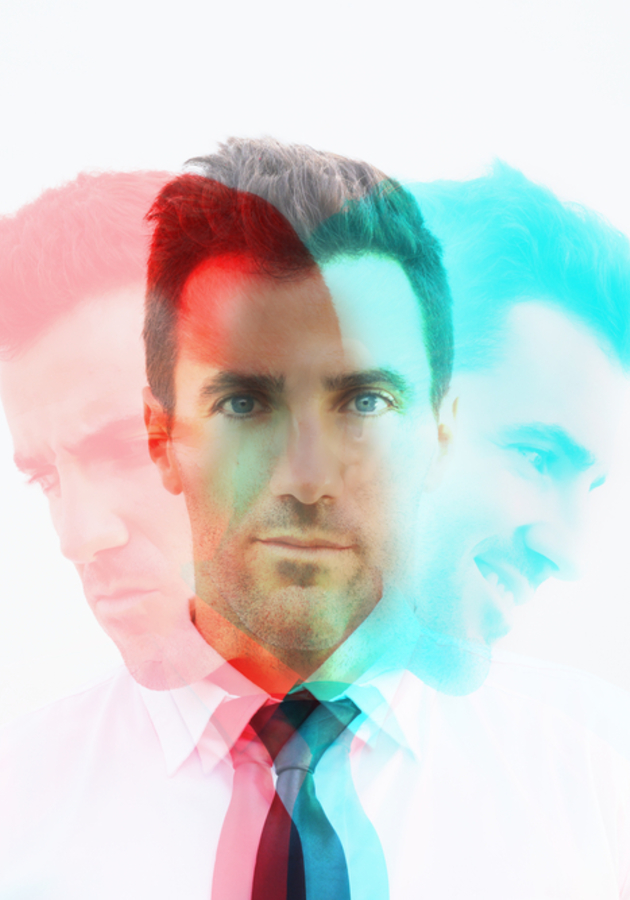“Finding someone today is probably more complicated and stressful than it was for previous generations, but you’re also more likely to end up with someone you are really excited about.” That’s the final conclusion of the joint investigation by American stand-up comedian Aziz Ansari and New York University sociologist Eric Klinenberg shared in their debut collaboration “Modern Romance.” The investigation itself, however, is much more interesting. Get ready to discover why.
Love and marriage: a brief history
In 1932, a sociologist named James Bossard compared 5,000 consecutive marriage licenses on file for people who lived in the city of Philadelphia. He discovered that one out of three married couples had lived within a five-block radius of each other before they got married. Even more fascinatingly, one out of six had lived within the same block, and one out of eight had lived in the very same building!
Things are very different today. The world is much better connected and very few people limit themselves to their building or neighborhood when choosing a lifetime partner. The main reason is, perhaps, the fact that nowadays we marry much later than people in previous generations. Stats don’t lie: back in 1950, the average age of marriage was around 20 for women and 23 for men. Nowadays, the average age of a first marriage is about 27 for women and 30 for men. In big cities, it’s even higher than that!
So, unlike our grandparents, we don’t marry right after high school or college, but rather after experiencing adulthood for some time and living outside our parents’ homes for quite a few years. The logic is simple: the later you are pressured into marriage by society, the more people you get to meet, so, the higher the chances they live far away from your childhood house.
The push for women’s equality was another big driver of the transformation of love and marriage. Simply put, women are much more emancipated today. As opposed to the first half of the last century, they now have a decisive say in who becomes their husband and why. Up until the 1960s, most women were not expected to have a good job or a promising career. Instead, they were expected to find a good husband. Knowing this, men chose them primarily for their “purity,” their childrearing abilities and their household skills.
As Stephanie Coontz, author of Marriage, a History, succinctly explains, until just a few decades ago, “most middle-class people had pretty rigid, gender-based expectations about what each person would bring to a marriage. Women wanted financial security. Men wanted virginity and weren’t concerned with deeper qualities like education or intelligence.” The result: the average couple wed after just six months! And you cannot usually get a deep knowledge of another person in six months.
Searching for your soulmate
Our century is the first in history where marriage is about love. To quote Coontz once again, for the entire history leading up to the 21st century, love was “filtered through strong gender stereotypes.” Men wanted women to cook their meals and needed children to help them on their farms; women, on the other hand, wanted men with a farm so they wouldn’t starve and die. The sexual revolution of the 1960s changed everything. By the last decade of the 20th century, 86% of American men and 91% of American women were not looking for a spouse to start a family with, but rather for a soulmate to love and cherish.
“The soulmate marriage,” illuminate Ansari and Klinenberg, “is very different from the companionate marriage. It’s not about finding someone decent to start a family with. It’s about finding the perfect person whom you truly, deeply love. Someone you want to share the rest of your life with. Someone with whom, when you smell a certain T-shirt they own, you are instantly whisked to a happy memory about the time he or she made you breakfast and you both stayed in and binge-watched all eight seasons of ‘Perfect Strangers’.”
This is all great, but there’s a big problem with it: a soulmate is much more difficult to find than a companion. As psychotherapist Esther Perel explains tongue-in-cheek, nowadays we expect from one person to give us what an entire village used to provide: belonging, identity, continuity, comfort, friendship, romance, sex, entertainment, humor, novelty, familiarity, predictability, surprise… In addition to being riddled with internal inconsistencies, the list is also endless. And yet, we expect that one day we’re going to find a person who can offer us all of this, and more. Are we not setting ourselves up for frustration and agony by expecting too much?
The paradox of choice
You can’t blame modern generations for expecting too much from their partners. Not just because of Hollywood and Disney, but also because “our romantic options are unprecedented and our tools to sort and communicate with them are staggering.” Not only were previous generations not allowed to choose their partners, they also didn’t have online dating sites and swipe apps like Tinder. “The world is available to us,” write Ansari and Klinenberg, “but that may be the problem.”
Barry Schwartz, a professor of psychology at Swarthmore College, knows this better than most of us. In his book “The Paradox of Choice,” he explores how more options usually lead to worse choices and less satisfaction. Just think about the last time you tried to pick a movie to watch with your friends. Because there are so many options, you probably spent an hour or two watching trailers, comparing genres and storylines, and even discussing and arguing which director is better. Eventually, you probably settled on the first or second movie someone recommended. Ironically, if you had stopped browsing then – or even made a random choice – you would have spent the time actually watching a movie, rather than choosing one.
Unfortunately, the fact that we have so many choices nowadays – about everything from movies to snacks, from Christmas ornaments to romantic partners – makes choosing a psychologically daunting task. According to Sheena Iyengar, a Columbia University professor who specializes in research on choice, there is even worse news – namely, as the number of options increase, choosing the best one becomes virtually impossible. This can be illustrated best by Iyengar’s influential 2000 jam experiment, in which she and her colleagues set up a table at a luxury food store and offered shoppers samples of jams, sometimes six, and other times 24. The experiment found that when people were offered 24 types of jams, they were more likely to stop and try one or several, but 10 times less likely to actually buy jam! What does that say about your love life?
Maximizers and satisficers
Translated in the parlance of modern romance, Iyengar’s jam experiment says that the more you swipe right in pursuit of your perfect partner, the less chances you’ll find them. To understand this better, it’s essential that we remind ourselves of Herbert Simon’ pioneering research in decision-making from the 1950s, and the distinctions he made between two different groups of people: “maximizers” and “satisficers.”
Maximizers are always interested in “the best.” They want to be sure that every choice they ever make is the best one they could have made. As opposed to them, satisficers – a term that combines “satisfy” and “suffice” – are not worried about the possibility there might be something better. They just want their choice to meet certain pre-formed criteria and standards. To use an Ansari example, a maximizer would do a rigorous amount of research to make sure they are getting the best taco they can find; a satisficer will just get tacos from the first decent taco stand and call it a day.
Up until recently, most people were satisficers by default. Simply put, for most people there were neither enough options around nor enough time, resources and autonomy to flick through them at will. Nowadays, we have all of that, so most of us are inclined to seek out “the best” in every area. Remember that “Rabbit or Duck” episode from “How I Met Your Mother,” when Barney’s phone kept ringing with different women? Well, that’s what’s happening to all of us: no matter how good we feel around a certain person, another Tinder date is just a few clicks away. Anyone with a smartphone, note Ansari and Klinenberg, carries a “24/7 singles bar” and “an ocean of romantic possibilities” in their pocket. Nobody can resist that. We’re not built to resist it.
The dating part of online dating
Does the fact that we are unable to choose when faced with too many options spells “frustration” for modern online daters? According to Ansari and Klinenberg, the answer is “no.” On the contrary, their research shows that millions of people have used apps such as Tinder to find precisely what they were looking for, from a one-night stand, to marriage and a family. In fact, according to a study by psychologist John Cacioppo, more than one third of couples who got married in the United States between 2005 and 2012 met through an online dating site!
The problem with online dating, Ansari and Klinenberg say, is not the concept itself, but the fact that, rather than a tool, it has become an addiction. Too many people, the authors memorably note, “spend way too much time doing the online part of online dating, not the dating part.” Case in point: in 2014, the average American spent 444 minutes per day in front of a screen! That’s one third of the entire day. In China, Brazil, Vietnam, the Philippines and Indonesia it’s even worse: people there spent more than nine hours per day staring at a screen.
Life and love, however, are not solely virtual experiences. If you want to do online dating right – or any dating for that matter – you don’t just need the options, you also need some time to analyze them. And not just on the screen, but in the real world as well. “No matter how many options we seem to have on our screens,” write Ansari and Klinenberg, “we should be careful not to lose track of the human beings behind them. We’re better off spending quality time getting to know actual people than spending hours with our devices, seeing who else is out there.”
That may be the most important practical takeaway from this book. We shouldn’t think of online dating as dating per se – but as “an online introduction service” or, even better, as “a huge party full of faces that [you] can swipe right to go to talk to.” Though swipe apps are often criticized as shallow because of their reliance on purely physical attraction, they are, in fact, a game changer – and, according to just about any research, for the better. You just have to know how to use them. See them as a means to an end, and they will help you find the right person; see them as an end in themselves, and they will ruin your love life for good.
Final notes
Both our search for the right person and our idea of what “the right person” actually means has changed radically in a very short amount of time. “Modern Romance” by Aziz Ansari and Eric Klinenberg explores the pros and cons of this transformation, as well as how to benefit from knowing them.
Filled with a lot of humor and interesting social experiments, the book is both funny and smart and – as one reviewer noted – works a lot like “an Aziz Ansari standup routine in print form.” What’s not to like there?
12min tip
Use Tinder – it’s great. But use it only as “an online introduction service.” Nothing is more useful than spending time with a person face-to-face. It never will be.





























